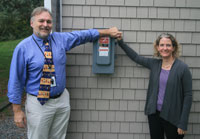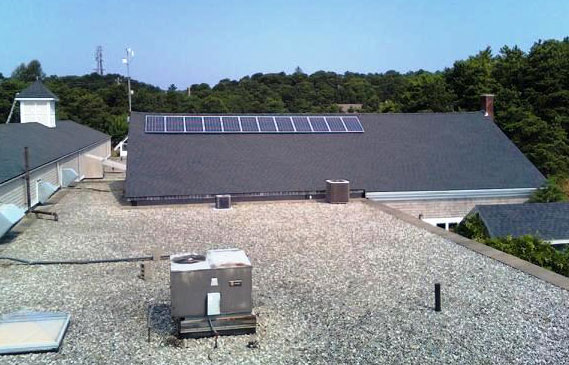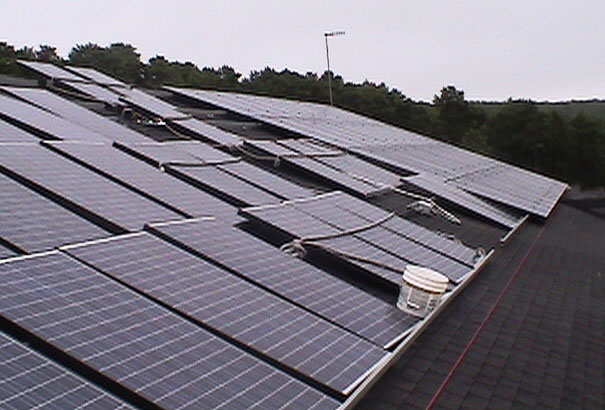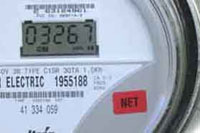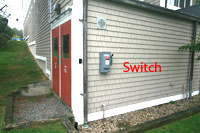Going Live
Funding and Contracting
In April 2009 the voters at the Annual Town Meeting approved warrant article #9 and appropriated $70,000 toward the purchase of a new 25,000 watt solar photovoltaic system. The system would be installed on the south-facing roof of the Truro Central School gym. The expectation was that the system would cost more than twice this appropriation, and that the town would endeavor to obtain grant funds to make up the difference.
 |
In the summer of 2009, we went out to competitive bid, and the low cost bidder was E2Solar, Inc. from Hyannis, at a bid cost of $113,148. Fortunately, we were then able to obtain a $90,000 grant for our "shovel-ready" project that originated from the federal "stimulus" American Recovery and Reinvestment Act. The grant was awarded through the Energy Efficiency and Conservation Block Grant program administered by the Massachusetts Department of Energy Resources. We also obtained a $4,139 grant from funds under the Massachusetts Renewable Energy Trust's Clean Energy Choice Program. With our town appropriated funds and these grants, we had enough financing to contract for the system to be installed. In the spring of 2010, the Board of Selectmen and Jason Stoots, president of E2Solar, signed a contract for the new PV system. | |
Installation Process
After obtaing the various permits and approvals, the installation got underway in July. The schedule was tight, because all work had to be completed by the end of August, before the school re-opened and the students returned. But excellent teamwork between E2Solar and school personnel, especially school custodian Fernando Hernandez, kept the project moving crisply along.
Relocating the Existing System
 Click image to enlarge |
The existing 12 panel 2,000 watt system, which was installed several years ago on the gym roof, first had to be moved. | |
Mounting the new Solar Photovoltaic Panels
Roof Work Complete
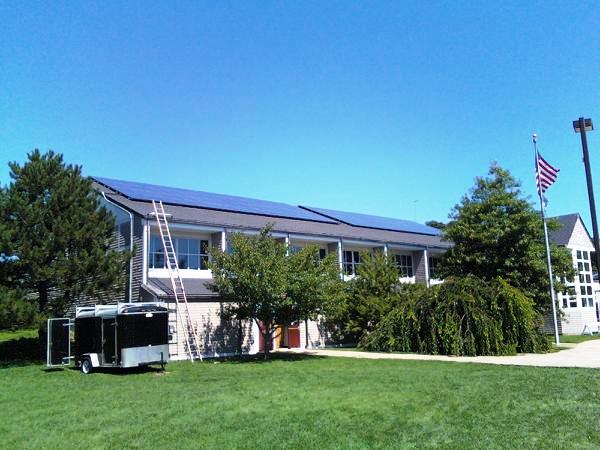 Click image to enlarge |
When all the panels were finally installed, they were then connected to produce DC current. Each Evergreen Solar ES-A-200-fa3 panel is about 3' by 5' and has a capacity of producing 200 watts. There are 124 panels in total.
In order to be used, that DC current must first be converted to AC current and then fed into the school's electrical system. |
|
Connecting the Panels to the Inverters
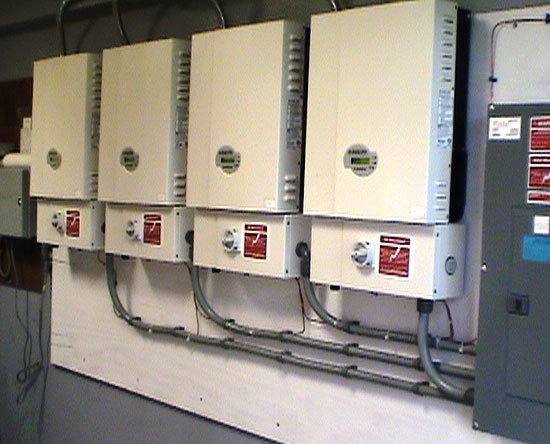 Click image to enlarge |
After the DC current is produced by the photovoltaic panels, it travels along the wiring down into the equipment closet. There it is run through 4 Solectria 5300 inverters which convert it to AC current.
That AC current is then fed into the school's electrical subpanel where it can be used to help meet the electrical demands. |
|
Connect to the NSTAR Grid
Financial Payback
In future eNewsletters, we hope to explain in more detail the financial aspects of the new solar installation. It will be an excellent investment for Truro and pay dividends in terms of reduced electricity costs and environmental impact for years to come.
